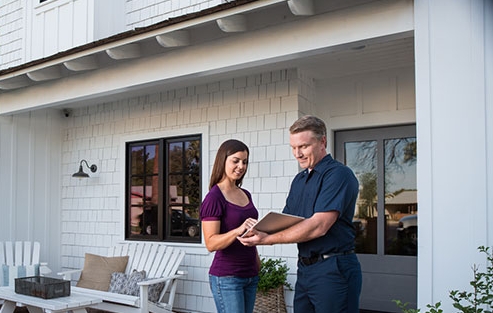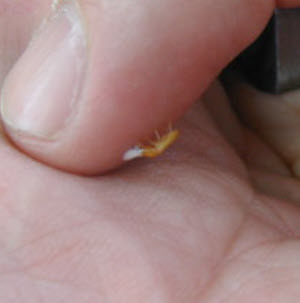- Formosan colonies can be big. While native subterranean termite colonies might support an average of 300,000 workers, Formosan colonies can average millions of workers—many of them foraging for food.
- A colony of Formosan termites could forage an area more than one acre in diameter.
- As Formosan termites infest a structure, they use soil and wood cemented together with saliva and feces to build hard nests, called cartons, within walls and other voids. Large cartons can cause walls to bulge. These nests can house thousands of termites as well as hold moisture. Once established, Formosan termites can live without soil contact.
- Formosan termites can also infest and weaken living trees.
- Swarmers are larger than swarmers of native species, and they swarm in the evening and later in the year (May-June).
- Soldiers comprise about 10% of the colony.
- Formosan termites can damage non-wood materials. They have been known to chew through plaster, plastics, asphalt, and even thin sheets of soft metals like lead and copper as they forage for wood food sources.
- Formosan queens can produce 1,000 eggs a day.
Formosan subterranean termites are one of several termite species that threaten homes and other structures in Hawaii and along the southeastern coastal areas of the continental United States.
Originally from mainland China, Formosan termites have been established in the continental U.S. for only about 50 years. Unfortunately, they are more vigorous, aggressive, and successful than native termites. The Formosan termite has been called the "super" termite because of their large colonies and ability to consume large amounts of wood in a relatively short time.
A mature colony of Formosan termites can number in the millions and consume as much as 13 ounces of wood per day. As a result, Formosan termites can severely damage a structure in as little as three months. Formosan termites are most visible during their annual mating flight. However, they cause more damage after the swarm is over. For this reason, it's extremely important to start a control program as soon as you find out that you have Formosan termites on your property.
Some quick facts about Formosan subterranean termites:
Interested in learning more about termites?

The assurance of a Trelona® ATBS Annual Bait Station licensed professional.
A termite control failure can mean frustration, disruption, stress, and damage to your home. There’s simply no substitute for the assurance and quality of service provided by licensed pest management professionals.


